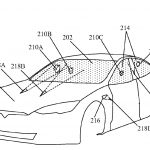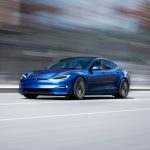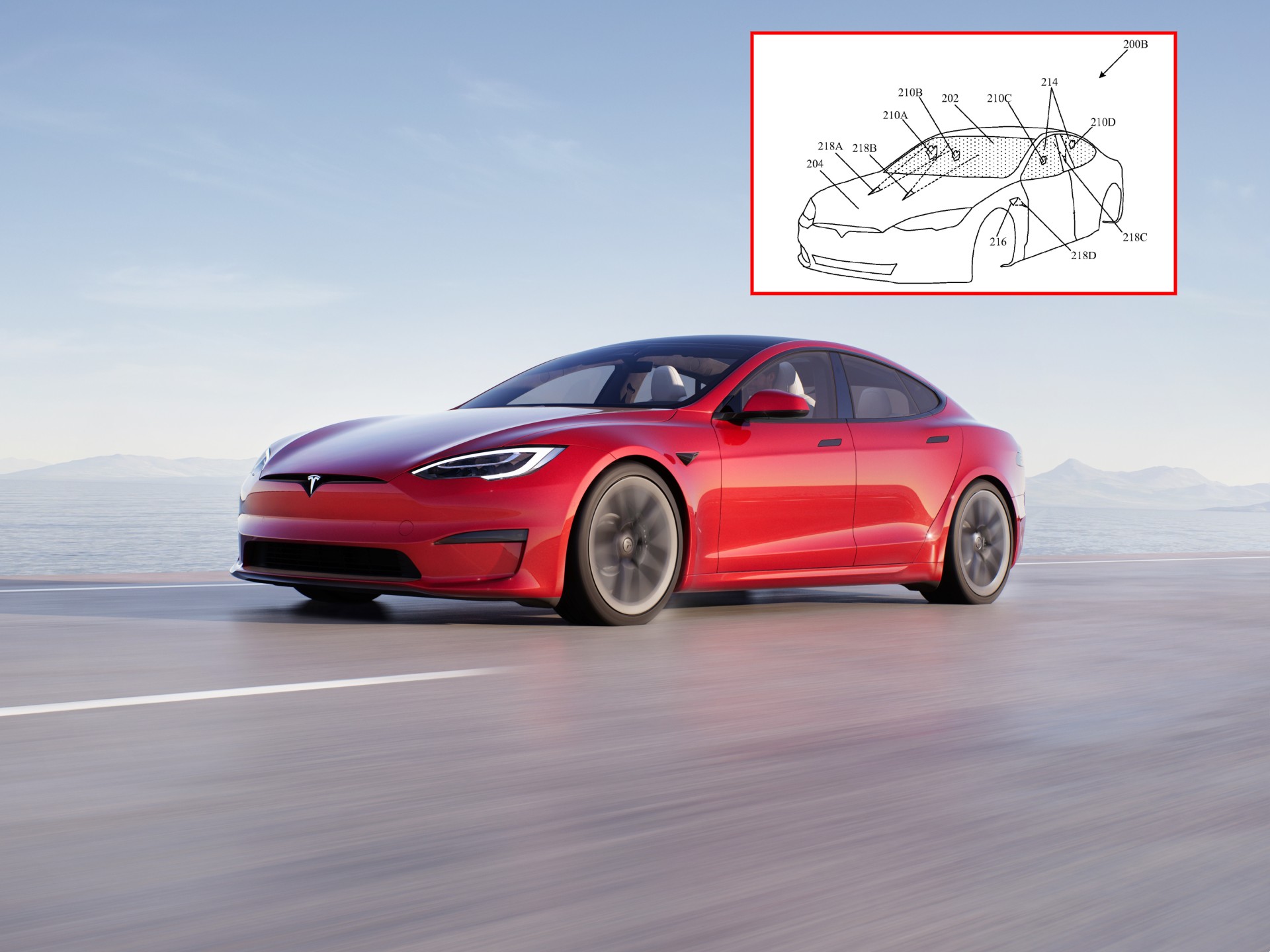
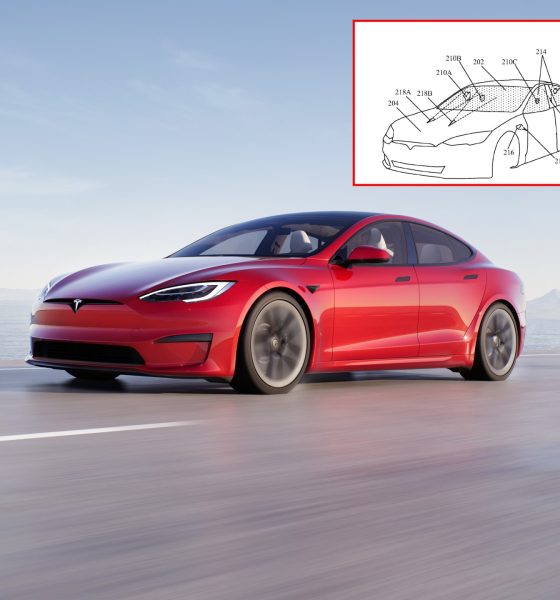
News
Tesla’s crazy laser windshield wipers have been published by the US Patent Office
Tesla’s idea for a crazy windshield wiper that would clear debris from a driver’s line of sight using a laser beam has been officially published by the United States Patent Office. Tesla filed the application for the patent in May 2019, and it finally was granted in late 2021. Now, the U.S. Patent Office has published the patent, making it publicly viewable.
Tesla has long been interested in some pretty crazy and revolutionary ideas for automobiles. Over the years, Tesla has looked at several different designs and ideas for windshield wipers, using anything from a single-wiper system for the Next-Gen Roadster that would utilize an electromagnetic linear actuator to rid the windshield of moisture, to no wipers at all when it unveiled the Cybertruck in November 2019. Most recent sightings of Tesla’s Cybertruck have indicated the vehicle will have wipers, but Tesla is still revising the design.
With all of the crazy ideas Tesla has thrown around for wipers in the past, the patent for the automaker’s “Pulsed Laser Cleaning of Debris Accumulated on Glass Articles in Vehicles and Photovoltaic Assemblies” is among the most interesting. Originally filed in May 2019, Tesla recently had the idea published by the U.S. Patent Office, meaning if the Office does not ultimately grant the patent, the public can still learn from the work and perhaps develop another system that could be granted.
Tesla describes the patent in the now-published filing:
A cleaning system for a vehicle includes a beam optics assembly that emits a laser beam to irradiate a region on a glass article of the vehicle, debris detection circuitry that detects debris accumulated over the region, and control circuitry. The control circuitry calibrates a set of parameters associated with the laser beam emitted from the beam optics assembly based on detection of the debris accumulated over the region on the glass article, controls an exposure level of the laser beam on the debris accumulated based on calibration of the set of parameters associated with the laser beam, wherein the exposure level is controlled based on pulsing the laser beam at a calibrated rate that limits penetration of the laser beam to a depth that is less than a thickness of the glass article and removes the debris accumulated over the region on the glass article using the laser beam.”
It is not necessarily confirmed or known what plans Tesla may have for the laser windshield wipers, but illustrations within the patent do seem to display a Model S body. Tesla may be willing to test this type of apparatus on some of its vehicles in-house, but the automaker has never detailed specific plans for the idea.
- Credit: US Patent Office
- Credit: Tesla
Tesla’s flowchart describing the process for the patent is relatively simple, and also shows uses with clearing debris from solar panels. In five steps, the patent describes the use of the laser cleaning assembly:
- Detect debris accumulated on a region on glass article installed in vehicle
- Calibrate a set of parameters associated with laser beam emitted from beam optics assembly, based on detection of debris accumulated on a region on glass article
- Control exposure level of laser beam on detected debris accumulated on glass article based on calibration of set of parameters associated with laser beam
- Irradiate region associated with the detected debris on glass article by laser beam
- Remove detected debris accumulated on region by laser beam
It doesn’t appear to be operated by the vehicle itself, either. Tesla describes the potential for a manual system where the driver could control the laser with a touchscreen, joystick, or another medium to communicate with different operational components of the cleaning apparatus.
While it seems like an outlandish and potentially satirical idea, it would not be too far past Tesla’s realm of ideas to use a laser to clear a windshield. After all, CEO Elon Musk has said in the past that the Roadster will fly thanks to SpaceX cold gas thrusters, Tesla has filed a patent for the Cybertruck to have solar cells on its tonneau for additional electric vehicle range, and plenty of other insane ideas. However, the new laser patent, if ultimately used by Tesla, would only decrease the already-minimal maintenance costs owners deal with, as yearly keep-up costs on EVs are extremely low.
Tesla Pulsed Cleaning Debris Accumulated on Glass Articles in Vehicles and Photovoltaic Assemblies by Joey Klender on Scribd

Elon Musk
Tesla CEO Elon Musk announces major update with texting and driving on FSD
“Depending on context of surrounding traffic, yes,” Musk said in regards to FSD v14.2.1 allowing texting and driving.
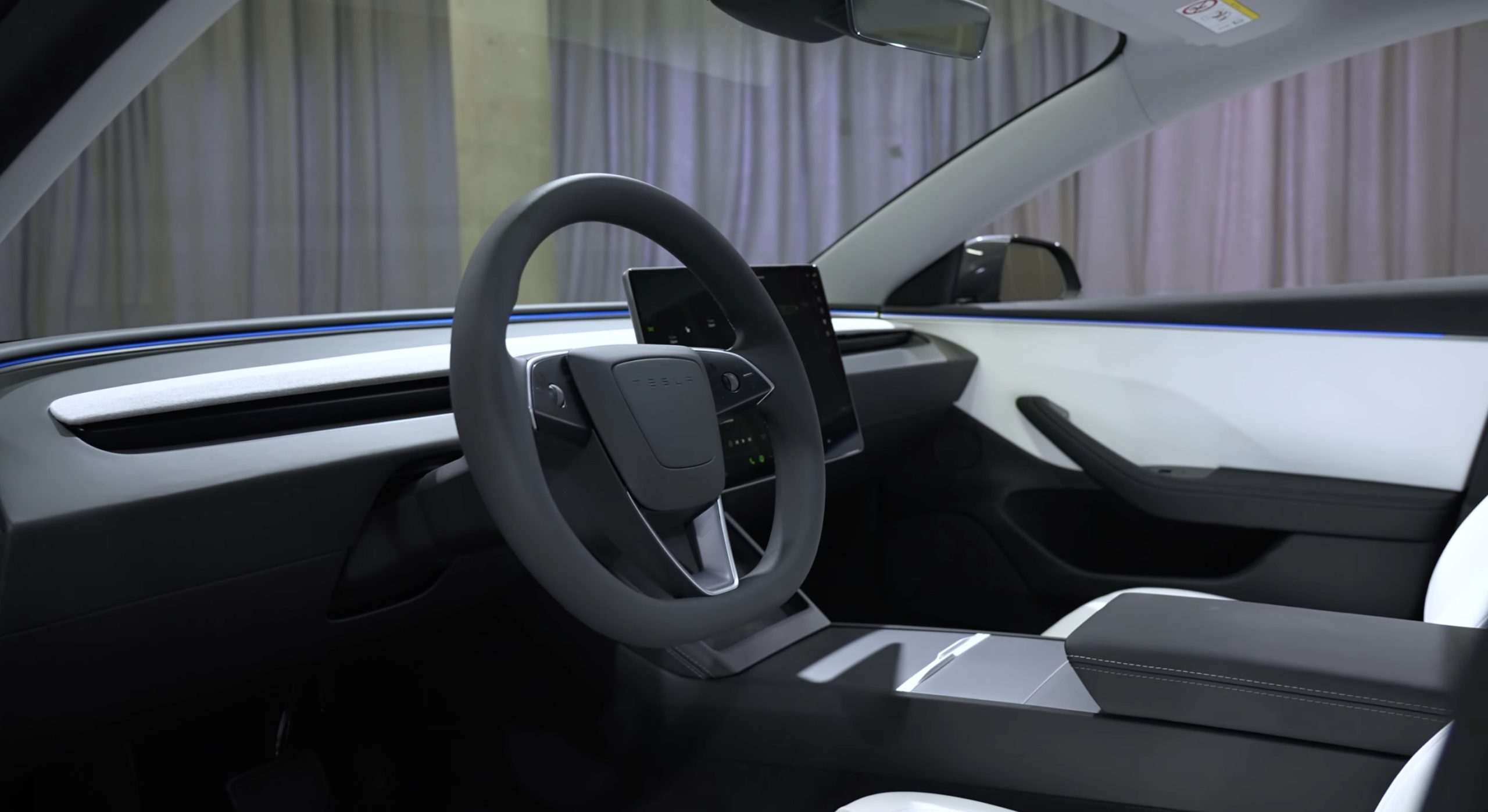
Tesla CEO Elon Musk has announced a major update with texting and driving capabilities on Full Self-Driving v14.2.1, the company’s latest version of the FSD suite.
Tesla Full Self-Driving, even in its most mature and capable versions, is still a Level 2 autonomous driving suite, meaning it requires attention from the vehicle operator.
You cannot sleep, and you should not take attention away from driving; ultimately, you are still solely responsible for what happens with the car.
The vehicles utilize a cabin-facing camera to enable attention monitoring, and if you take your eyes off the road for too long, you will be admonished and advised to pay attention. After five strikes, FSD and Autopilot will be disabled.
However, Musk announced at the Annual Shareholder Meeting in early November that the company would look at the statistics, but it aimed to allow people to text and drive “within the next month or two.”
He said:
“I am confident that, within the next month or two, we’re gonna look at the safety statistics, but we will allow you to text and drive.”
“I am confident that, within the next month or two, we’re gonna look at the safety statistics, but we will allow you to text and drive.”
Does anyone think v14.3 will enable this? pic.twitter.com/N2yn0SK70M
— TESLARATI (@Teslarati) November 23, 2025
Today, Musk confirmed that the current version of Full Self-Driving, which is FSD v14.2.1, does allow for texting and driving “depending on context of surrounding traffic.”
Depending on context of surrounding traffic, yes
— Elon Musk (@elonmusk) December 4, 2025
There are some legitimate questions with this capability, especially as laws in all 50 U.S. states specifically prohibit texting and driving. It will be interesting to see the legality of it, because if a police officer sees you texting, they won’t know that you’re on Full Self-Driving, and you’ll likely be pulled over.
Some states prohibit drivers from even holding a phone when the car is in motion.
It is certainly a move toward unsupervised Full Self-Driving operation, but it is worth noting that Musk’s words state it will only allow the vehicle operator to do it depending on the context of surrounding traffic.
He did not outline any specific conditions that FSD would allow a driver to text and drive.
News
Tesla Semi just got a huge vote of confidence from 300-truck fleet
The confidential meeting marks a major step for the mid-sized carrier in evaluating the electric truck for its regional routes.
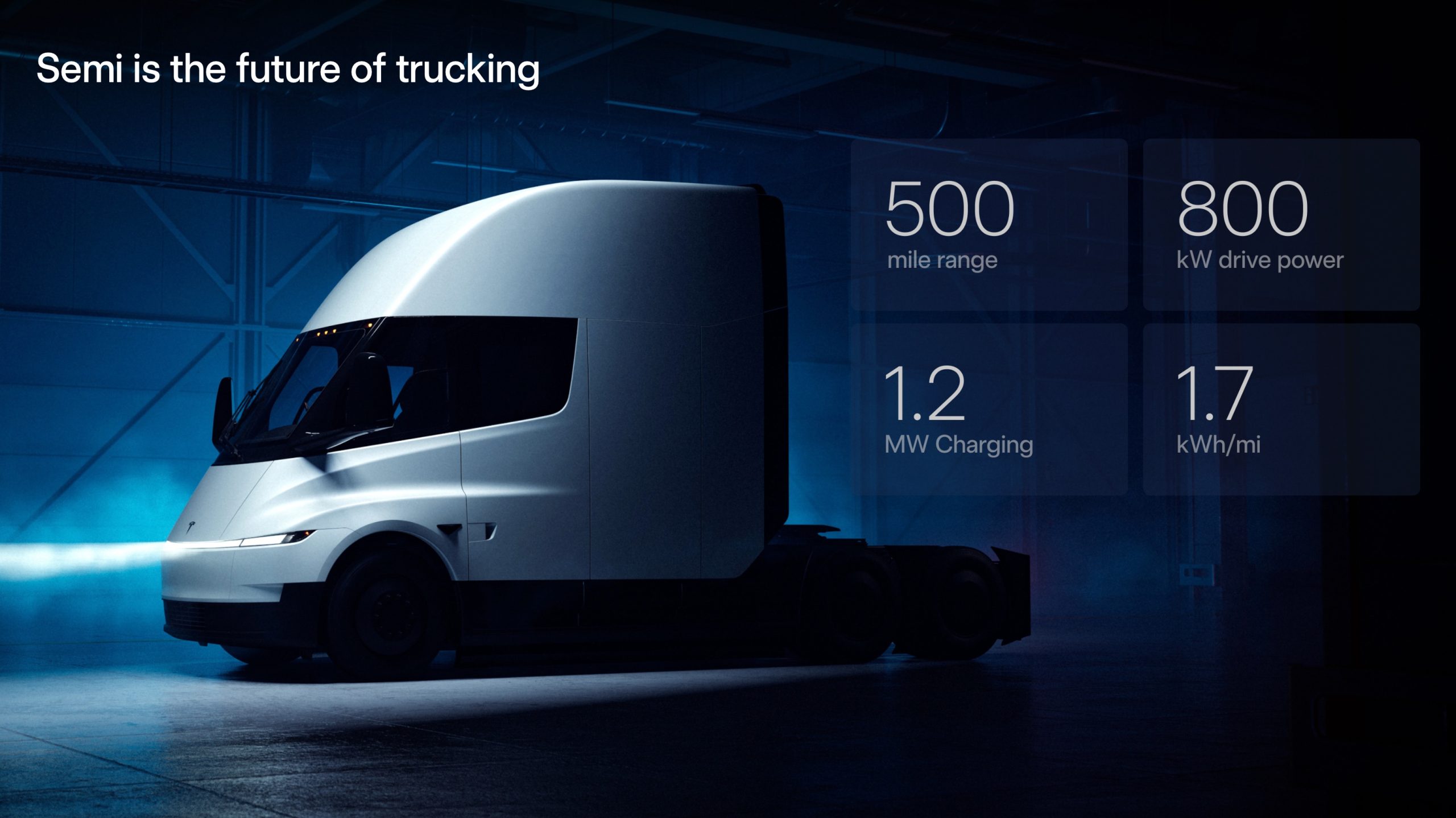
The Tesla Semi is moving closer to broader fleet adoption, with Keller Logistics Group wrapping up a key pre-production planning session with the electric vehicle maker’s team this week.
The confidential meeting marks a major step for the mid-sized carrier in evaluating the electric truck for its regional routes.
Keller’s pre-production Tesla Semi sessions
Keller Logistics Group, a family-owned carrier with over 300 tractors and 1,000 trailers operating in the Midwest and Southeast, completed the session to assess the Tesla Semi’s fit for its operations. The company’s routes typically span 500-600 miles per day, positioning it as an ideal tester for the Semi’s day cab configuration in standard logistics scenarios.
Details remain under mutual NDA, but the meeting reportedly focused on matching the truck to yard, shuttle and regional applications while scrutinizing economics like infrastructure, maintenance and incentives.
What Keller’s executives are saying
CEO Bryan Keller described the approach as methodical. “For us, staying ahead isn’t a headline, it’s a habit. From electrification and yard automation to digital visibility and warehouse technology, our teams are continually pressure-testing what’s next. The Tesla Semi discussion is one more way we evaluate new tools against our standards for safety, uptime, and customer ROI. We don’t chase trends, we pressure-test what works,” Keller said.
Benjamin Pierce, Chief Strategy Officer, echoed these sentiments. “Electrification and next-generation powertrains are part of a much broader transformation. Whether it’s proprietary yard systems like YardLink™, solar and renewable logistics solutions, or real-time vehicle intelligence, Keller’s approach stays the same, test it, prove it, and deploy it only when it strengthens service and total cost for our customers,” Pierce said.
News
Tesla extends FSD Supervised ride-alongs in Europe by three months
Needless to say, it does appear that FSD fever is starting to catch in Europe.

Tesla appears to be doubling down on its European Full Self-Driving (Supervised) push, with the company extending its demo ride-along program by three months until the end of March 2026. The update seems to have been implemented due to overwhelming demand.
Needless to say, it does appear that FSD fever is starting to catch in Europe.
Extended FSD demonstrations
Tesla EU Policy and Business Development Manager Ivan Komušanac shared on LinkedIn that the company is offering ride-along experiences in Germany, France and Italy while working toward FSD (Supervised) approval in Europe.
He noted that this provides a great feedback opportunity from the general public, encouraging participants to record and share their experiences. For those unable to book in December, Komušanac teased more slots as “Christmas presents.”
Tesla watcher Sawyer Merritt highlighted the extension on X, stating that dates now run from December 1, 2025, to March 31, 2026, in multiple cities including Stuttgart-Weinstadt, Frankfurt and Düsseldorf in Germany. This suggests that the FSD ride-along program in Europe has officially been extended until the end of the first quarter of 2026.
Building momentum for European approval
Replies to Merritt’s posts buzzed with excitement, with users like @AuzyMale noting that Cologne and Düsseldorf are already fully booked. This sentiment was echoed by numerous other Tesla enthusiasts on social media. Calls for the program’s expansion to other European territories have also started gaining steam, with some X users suggesting Switzerland and Finland as the next locations for FSD ride-alongs.
Ultimately, the Tesla EU Policy and Business Development Manager’s post aligns with the company’s broader FSD efforts in Europe. As per recent reports, Tesla recently demonstrated FSD’s capabilities for Rome officials. Reporters from media outlets in France and Germany have also published positive reviews of FSD’s capabilities on real-world roads.
